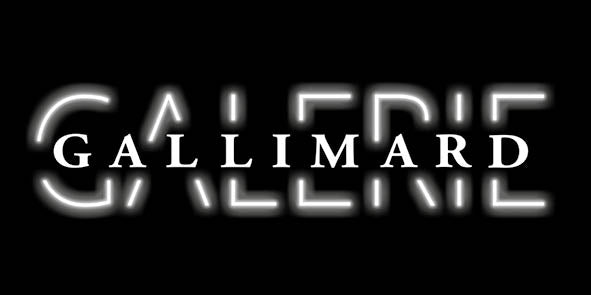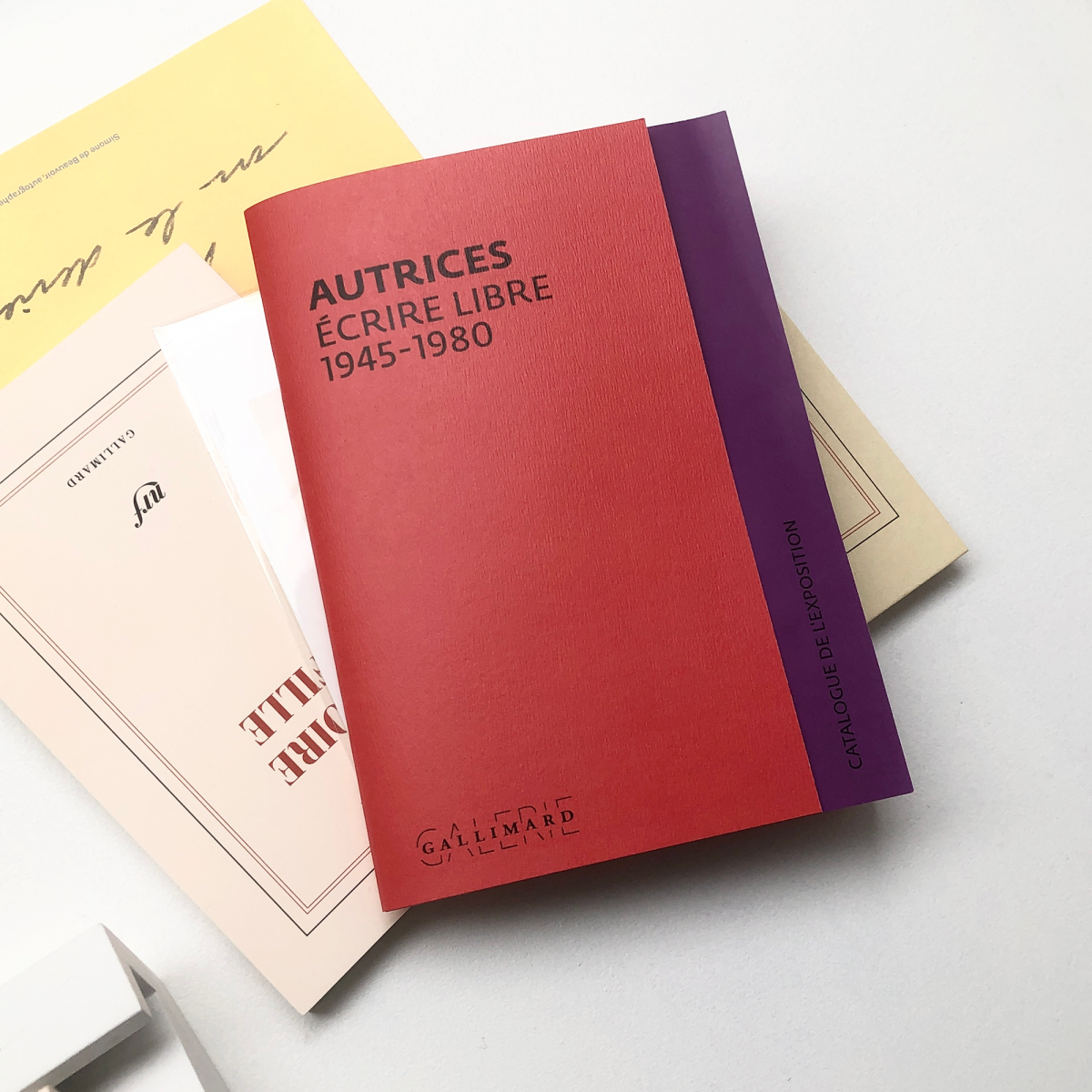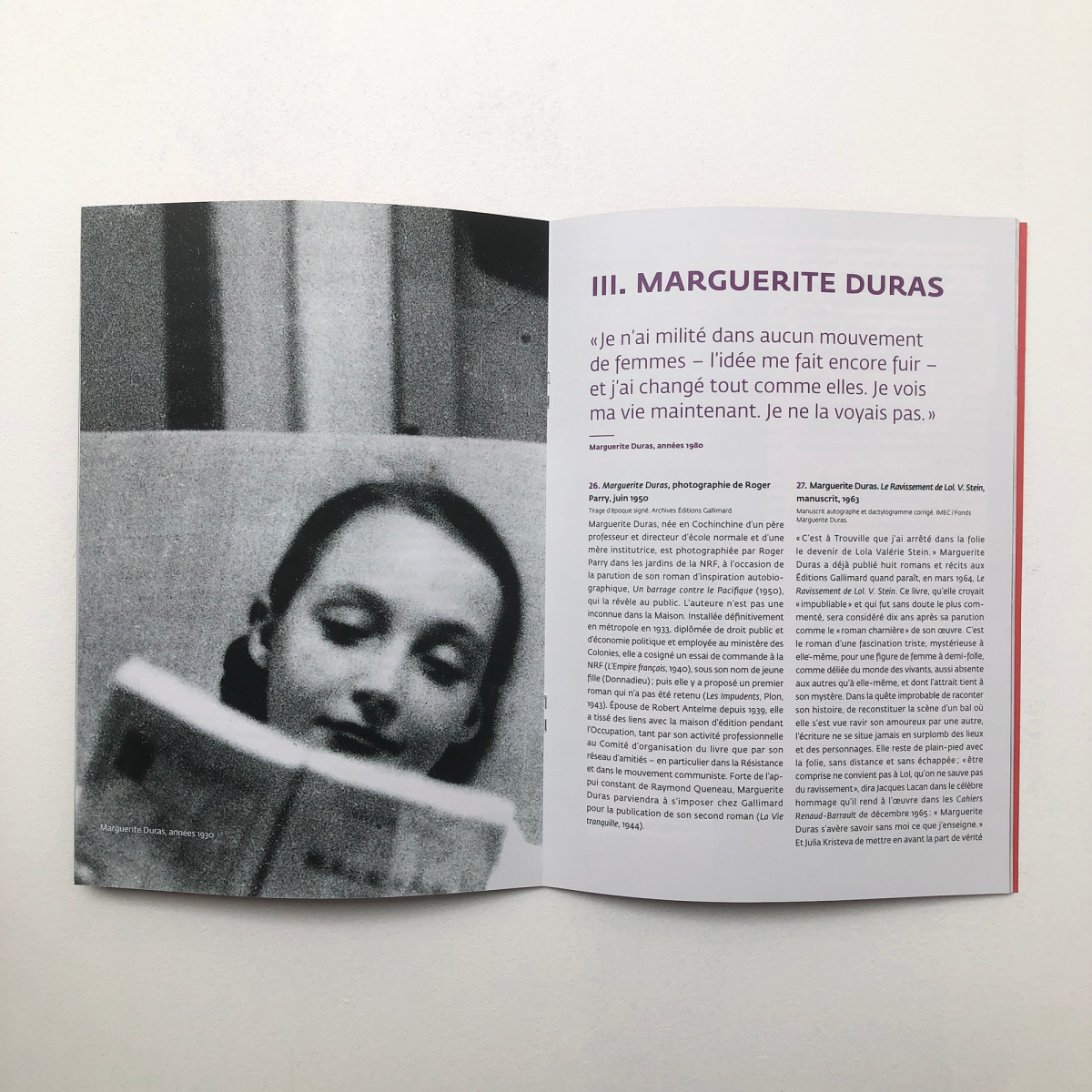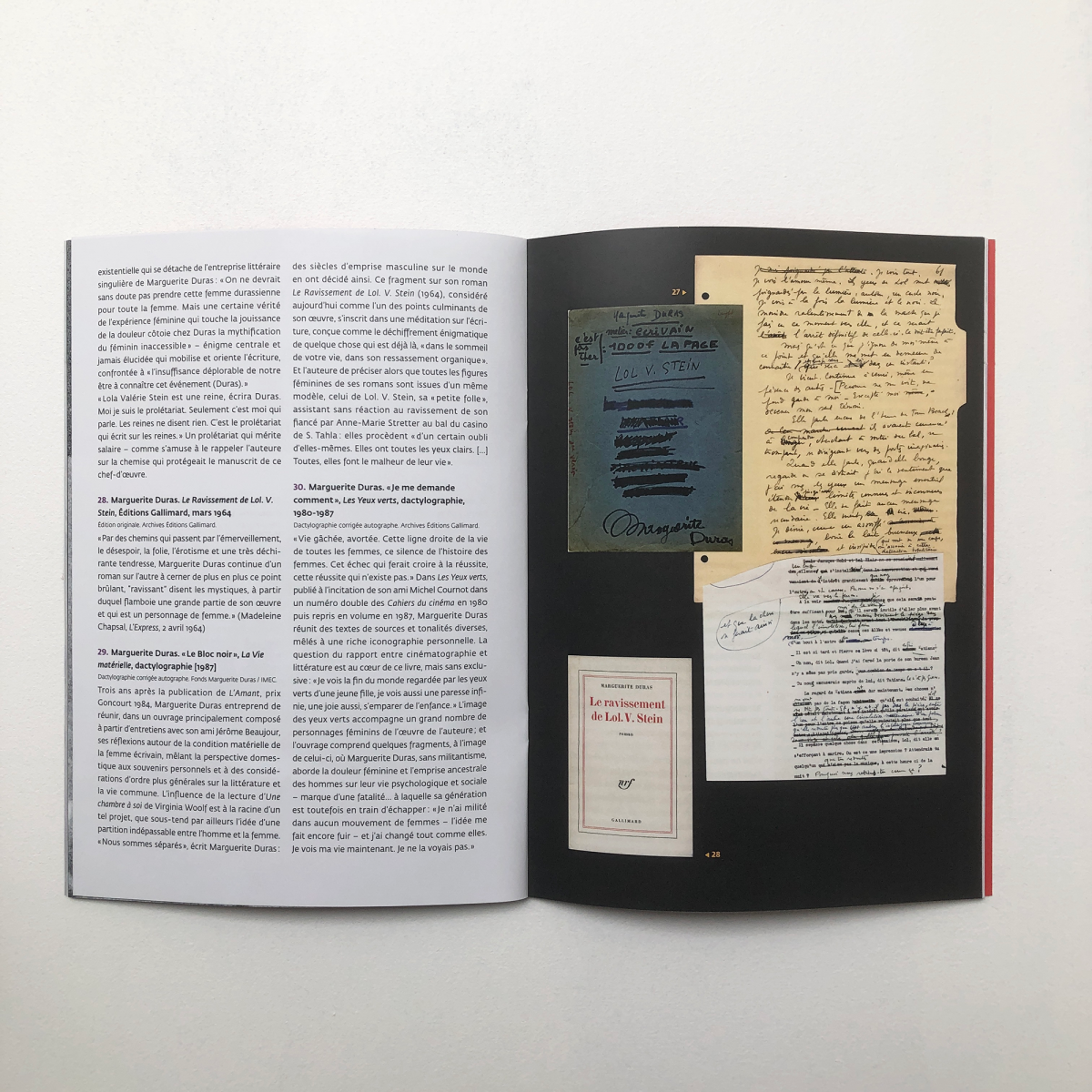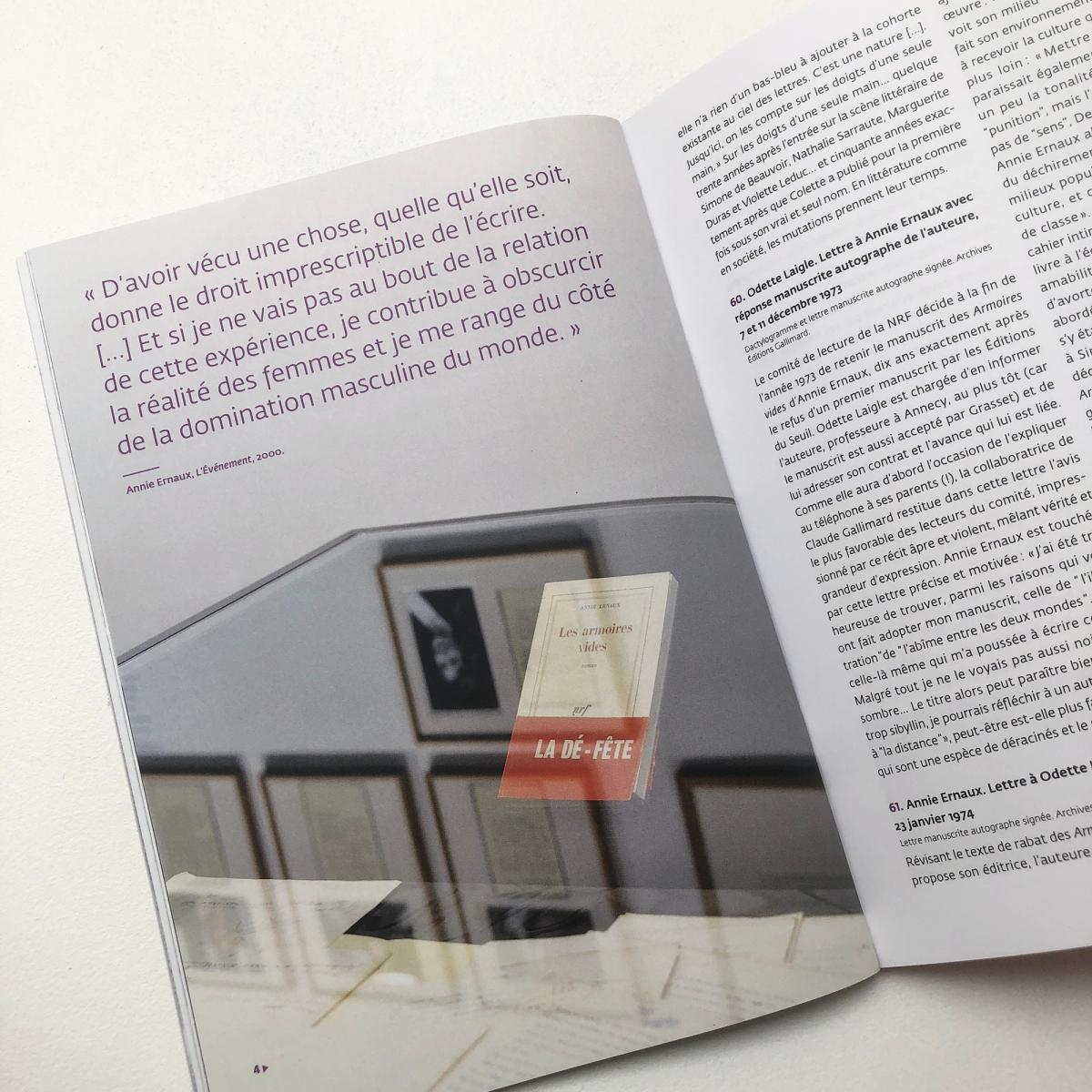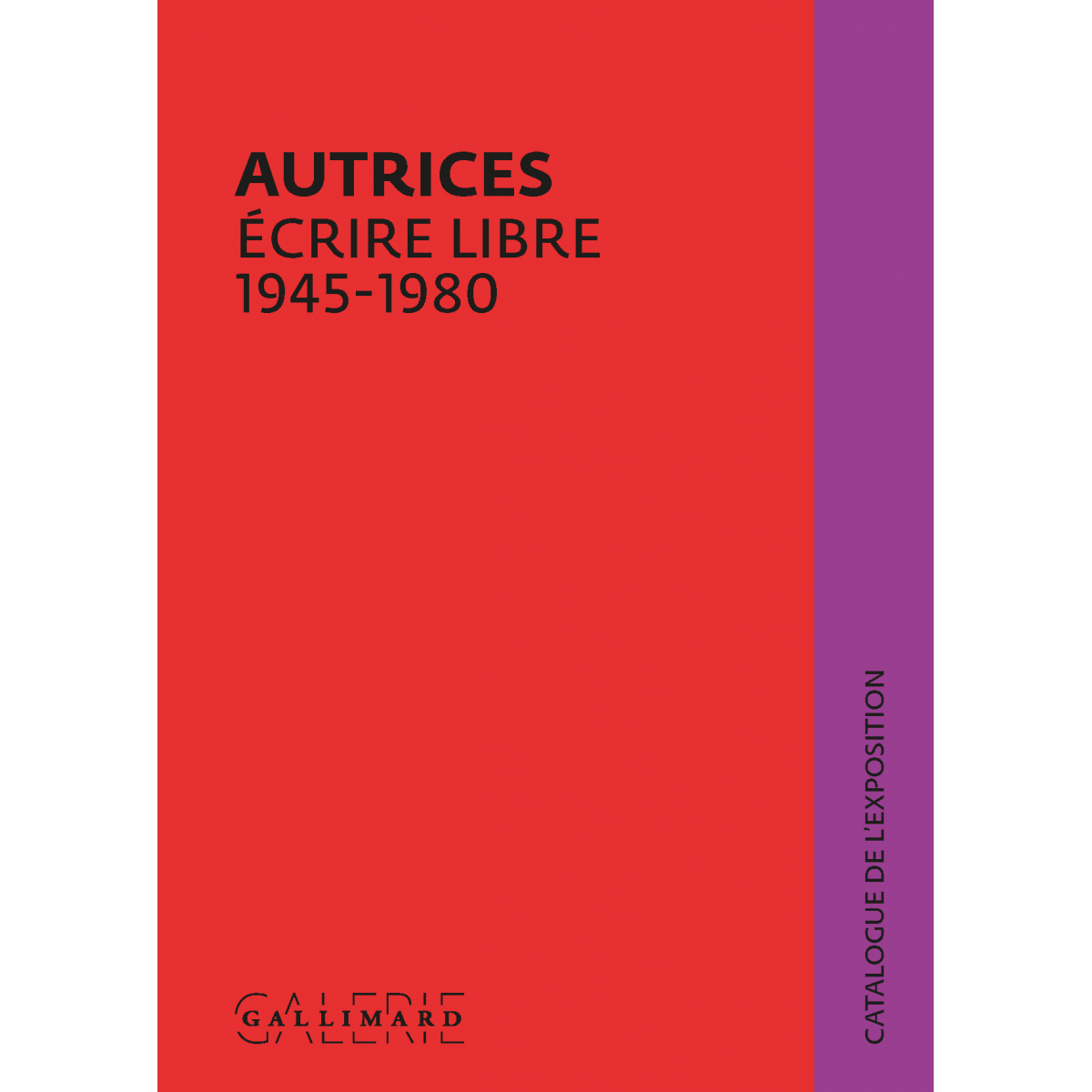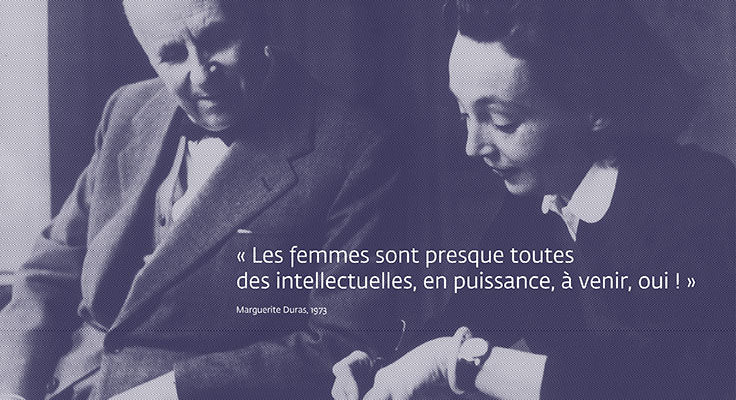
Women authors, writing freely (1945-1980)
- Heritage exhibition from September 15 to November 14, 2020.
- Extension until December 23, 2020
The awarding of the Prix Goncourt to Elsa Triolet in 1945 marked the entry of women into a prize list as masculine as its jury had been until then. The event inaugurated an era finally more favorable to diversity in literature, after decades of underrepresentation of women authors in the catalogs of French publishers. One of the particularities of this movement of intellectual emancipation is that it delivers its critical sense at the same time as it is accomplished in works; following the publication of The Deuxième Sexe (1949), women finally express themselves and explain themselves; and they have "places" to do so, as Virginia Woolf and Colette had called for.
From the post-war period, Éditions Gallimard welcomed a large number of women authors from the generation born between 1890 and 1920: Nathalie Sarraute, Simone de Beauvoir, Marguerite Duras, Violette Leduc and other contemporaries made their debut in the catalogue. The unveiling of a feminine "reality", in all situations of individual and collective experience, was from then on one of the great literary polarities of the time, without excluding other issues of expression. But this was only the beginning. In 1973, upon reading the manuscript of Annie Ernaux's first book, the Gallimard reading committee was impressed and pointed out that the young woman was still an exception among her contemporaries: "Up until now, we can count them on the fingers of one hand."

35 years of literary creation, 35 years of emancipation. A period that is consecrated, rather than closed, by the election in 1980 of the first woman to the Académie française, Marguerite Yourcenar.
35 years that pave the way for today's women authors.
Simone de Beauvoir, La Force des choses, 1963"I saw in my books my true accomplishment and they exempted me from any other affirmation of myself."
